If you missed Part 1 of our Alps wildflower primer, be sure to check it out too. Summer in the Swiss Alps seems to burst forth daily with new flowers. Here are some of the most recent gems.
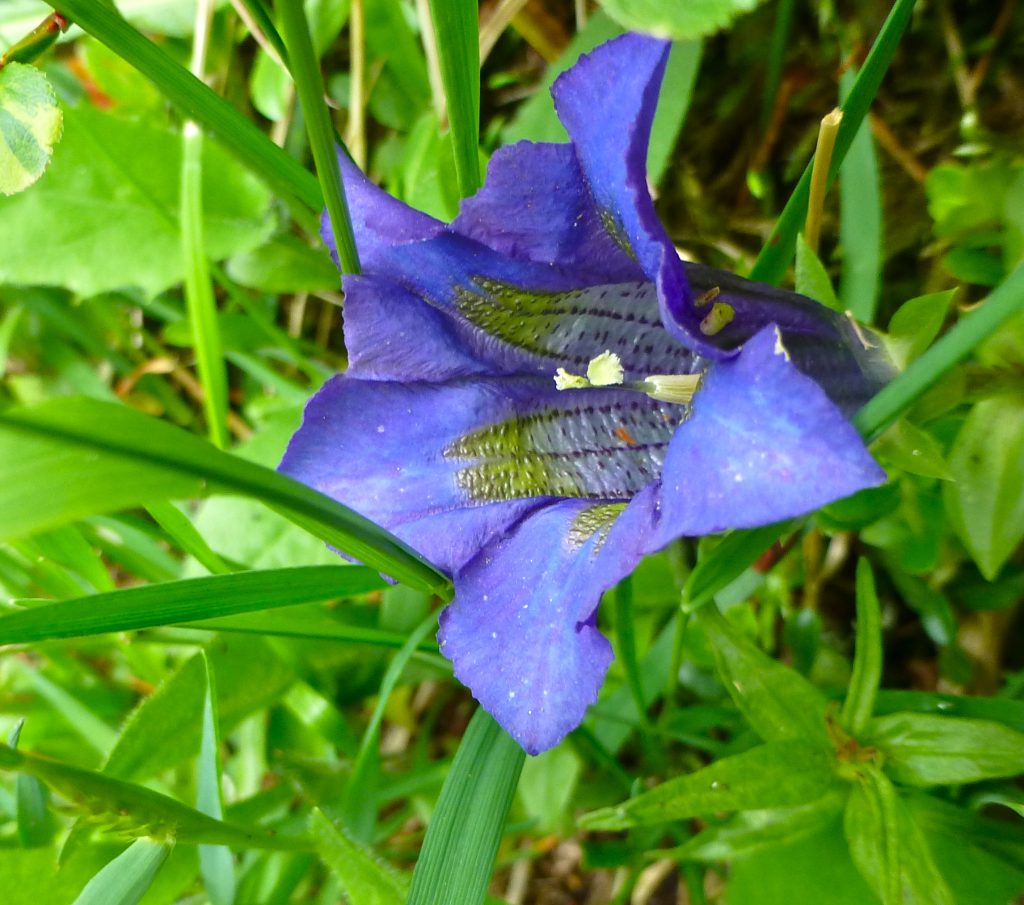 Koch’s Gentian: Gentiana acaulis is endemic to Europe and found in mountain areas in Central and southern Europe. It is an herb that grows in alpine grassland, shrubland, rocky places and forest clearings, on acidic soil (Talaveras et al. 2012, Klotz et al. 2002, Peev and Vladimirov 2011).The root of this species, gentian root, has various medicinal properties similar to Gentiana lutea (Plants For A Future 2012). Gentian root is prepared as a dry or liquid extract, a tincture or comminuted herbal substance. It is traditionally used in mild dyspeptic and gastrointestinal disorders as well as to treat loss of appetite (European Medicines Agency 2009). Protected and on the threatened list.
Koch’s Gentian: Gentiana acaulis is endemic to Europe and found in mountain areas in Central and southern Europe. It is an herb that grows in alpine grassland, shrubland, rocky places and forest clearings, on acidic soil (Talaveras et al. 2012, Klotz et al. 2002, Peev and Vladimirov 2011).The root of this species, gentian root, has various medicinal properties similar to Gentiana lutea (Plants For A Future 2012). Gentian root is prepared as a dry or liquid extract, a tincture or comminuted herbal substance. It is traditionally used in mild dyspeptic and gastrointestinal disorders as well as to treat loss of appetite (European Medicines Agency 2009). Protected and on the threatened list.

Wood Crane’s Bill : Geranium sylvaticum. The flowers of this plant range from pink to deep purple. After flowering, a beaked fruit is formed from the long styles which remain attached to the seeds,resembling the long bill of a crane or heron. The male anthers ripen and wither away before the female stigma opens. This prevents self-pollination which reduces the species’ ability to adapt and survive (Pocket Nature Wildflowers). In ancient Greek times it was said to be used as a dye for war outfits and gave good luck to the wearer. Wood Crane’s Bill is scattered all over the meadows in the Swiss Alps.
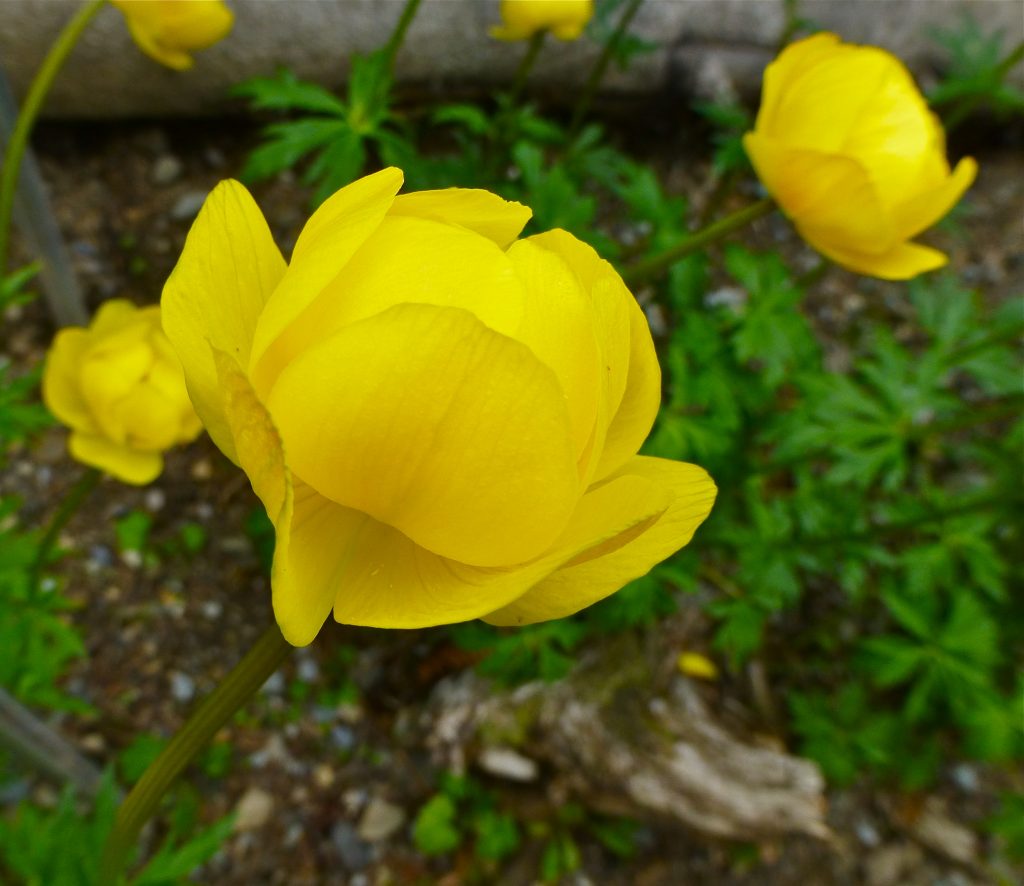
Globeflower: Trollius europaeus. I love this simple, flower which seems to form a neat, perfect globe. It often forms in colonies in damp open meadows, among rocks and stream banks. It’s a member of the buttercup family and is poisonous. These flowers attract a lot of flies, beetles and burrowing bees. Its most important pollinator is probably the small globeflower fly. These hang around the flowers for days sometimes, and as they move from flower to flower they pollinate the plant. The fly lays eggs in the pistil’s ovaries and the emerging caterpillars use the flower’s ripening follicles’ seed for nutrition. They do not destroy all the seeds, so both the plant and the insect benefit.
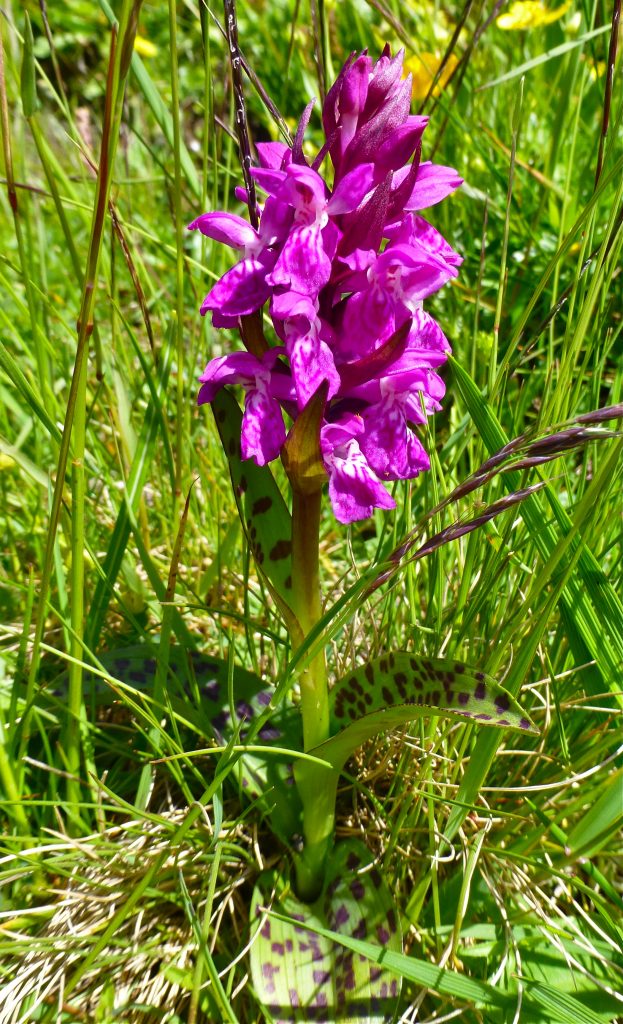
Common Spotted Orchid: Dactylorhiza fuchsii. Even before it flowers, this orchid is identified by the dark round blotches on its shiny green leaves. The Common Spotted Orchid grows in colonies in open woods, meadows, and marshes. These brilliant flowers stand majestically at attention dotting the hillsides.

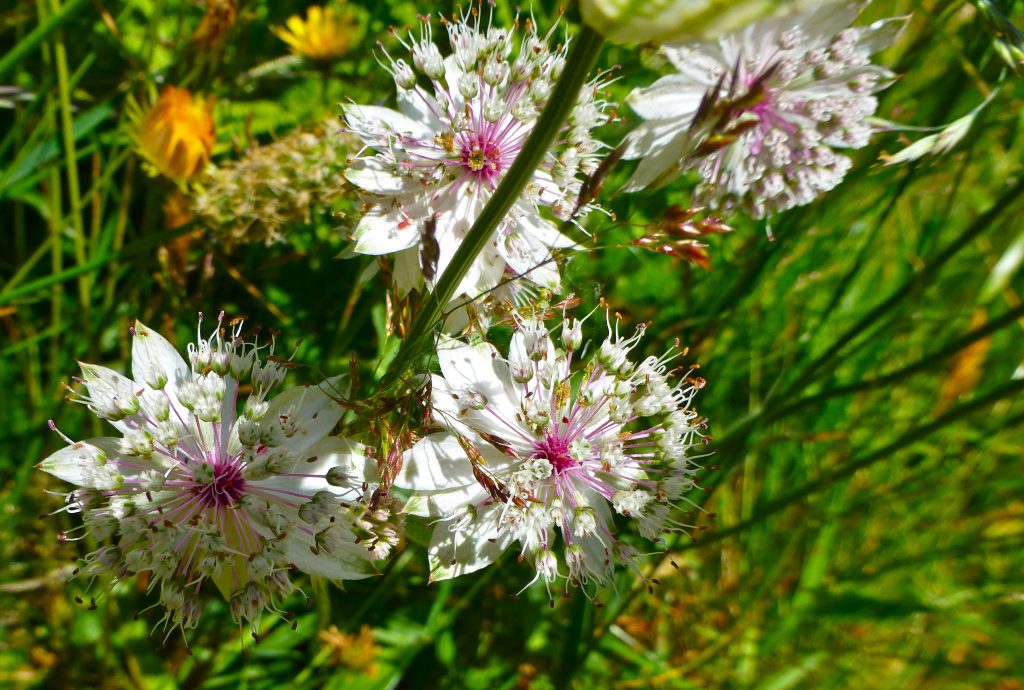
These two photos show the Big Masterwort: Astrantia major. The name Astrantia, like Asters, is in reference to the flowers’ star-like presentation. These members of the carrot family produce wirey, top branched stems with intricately formed, ¾”-1¼”, pin cushion-like umbels of tightly packed, 5 petaled flowers, surrounded by a ring of papery, petal-like bracts(The Garden Helper). They grow in damp, fertile, woodland conditions, or near the banks of a pond or small stream, where the soil always remains moist. Tea made from the leaves can stimulate the appetite. These sweet, delicate looking blooms are burdened with an unattractive sounding name: wort. Poor guys! Protected.
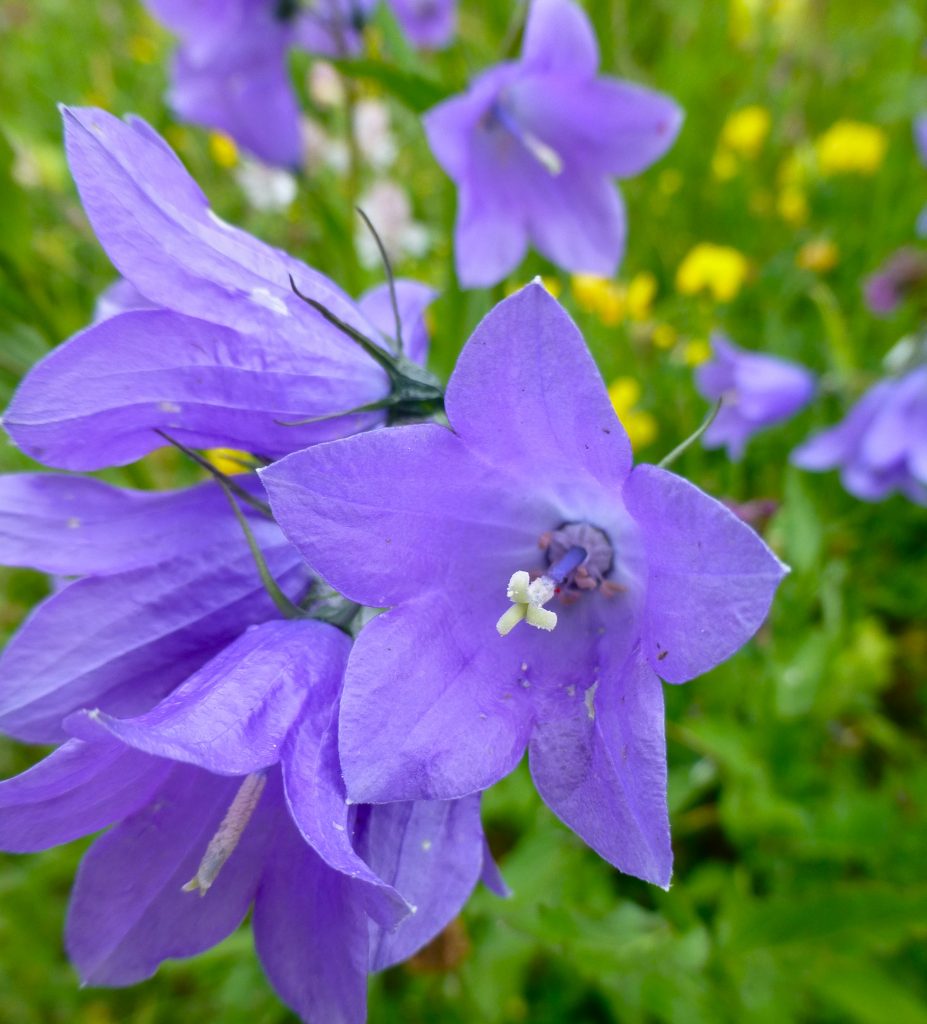
We will finish Swiss Alps Flower primer 2 with the ubiquitous Bluebell Bellflower/Harebells: Campanula rotundifolia. In the Alps there are more than 50 species of bellflower. The genus name, from the Latin campana (bell), means little bell. The name Harebell may allude to an association with witches, who were believed able to transform themselves into hares, portents of bad luck when they crossed a persons path. In Scotland, another name for this plant was Witches Thimble. The characteristics of this perennial vary considerably, depending on habitat conditions. It likes to grow in moist, rocky, mountain slopes; dry meadows & prairies; and open woods (Lady Bird Johnson Wildflower Center).
The Bernese Oberland in June or early July is a great place to see meadows full of wildflowers, but you will also find them all over the Alps at all times of summer. The Dolomites have a particularly interesting variety of flowers, and if you want to see Edelweiss, Zermatt has a couple locations where you’re sure to find it (at the right time of year).

